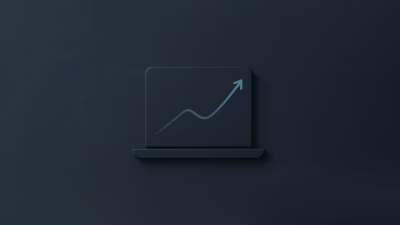Six seconds. That’s how long it takes for a recruiter to decide if your resume is worth a second look—or if it’s getting tossed into the digital abyss. It sounds brutal, but that’s the reality. And the craziest part? This isn’t a guess. It’s backed by hard data from eye-tracking studies that map out exactly where their eyes go and what they’re searching for.
Now, let’s unpack what those six seconds really look like, and more importantly, how you can hack them.
The Eye-Tracking Breakdown
Eye-tracking technology measures exactly where someone’s gaze lands and how long they linger on different sections. Studies from The Ladders and TalentWorks have shown a consistent pattern when recruiters scan a resume. Their eyes follow a predictable path:
- Name and Contact Information — Top of the page, usually a quick scan to see who you are and how to reach you.
- Current Title and Company — They want to know what you’re doing right now. This gets the most attention.
- Previous Title and Company — They want to see your career progression. If it’s logical and upward-trending, you’ve got their interest.
- Dates of Employment — Gaps? Job-hopping? They’ll spot it immediately.
- Education — Only if it’s relevant or recent. Otherwise, it’s a flick of the eyes.
And that’s it. Everything else—skills, volunteer work, side projects? That’s bonus material if they’re already interested. The trick is making sure you’re not burying the good stuff beneath fluff.
Crafting for the 6-Second Window
Alright, so how do you build a resume that’s optimized for this blink-of-an-eye assessment? First off, clarity is your best friend. No quirky fonts, no wild colors. Your name should be big, bold, and right at the top. Next, your job title—don’t make them guess what you do. If you’re a Data Scientist, say it loud and clear. If you’re a Machine Learning Engineer, own it.
And for the love of everything sacred in job applications, put your contact information where it’s expected. Top right or right beneath your name. If they have to hunt for it, you’ve already lost them.
Use a Logical, F-Pattern Layout
Recruiters read resumes in an F-shaped pattern. This means their eyes track horizontally across the top, down a bit, and then horizontally again. This is why your current job title and company need to be up top, clearly visible, and easy to understand. Use bold fonts for section headers and keep your layout structured—think bullet points for key responsibilities and achievements.
But here’s the kicker: don’t over-bullet. If everything is emphasized, nothing is. Highlight only what matters—your biggest wins, your proudest projects, the stuff that’ll make them want to call you.
Quantify Everything
You’ve heard this one before, but it’s worth repeating: numbers talk. Increased sales by 20%, reduced processing time by 30%, managed a budget of $500,000. Recruiters’ eyes are trained to look for impact, and numbers are the fastest way to communicate that. If you’re just listing responsibilities without impact, you’re blending into the noise.
Address Gaps or Job-Hopping (Because They’ll Notice)
One of the first things a recruiter’s eyes track is your dates of employment. If you’ve got gaps, they’re going to see them. The trick isn’t hiding them—it’s addressing them. If you took a break for learning, parenting, or even travel, note it. Something as simple as 2019–2020: Career sabbatical for skill development and personal projects can fill in the blanks and keep them reading.
And if you’ve hopped around a lot? Frame it as consulting or project-based work. 2018–2020: Data Science Consultant for multiple tech startups. Instantly reframes you as versatile instead of unstable.
The Myth of the Objective Statement
If you’re still using an objective statement, it’s time to cut it. Recruiters aren’t scanning your resume to learn what you want—they’re looking for what you can do for them. Replace it with a Professional Summary instead. A tight, two-sentence overview of your experience and what makes you exceptional. Something like:
Data Scientist with 5+ years of experience in predictive modeling and data visualization. Proven ability to translate complex datasets into actionable business insights, driving strategic decision-making.
Clean. Simple. Powerful.
The Final Scan: Make It Easy to Contact You
After a recruiter’s eyes have danced across your experience and education, they’re making a decision. If it’s a yes, they’re immediately looking for your contact info. Make it easy. One-click LinkedIn URL, email, phone number. Right at the top. If they have to scroll, you’ve made them work too hard.
Wrapping It Up
Six seconds isn’t long, but it’s enough. Enough to make an impression, enough to tell your story—if you craft it right. Follow the eye-tracking map. Put the important stuff where it gets seen. Quantify your impact. Skip the fluff. If you can do that, six seconds is all you need.
And hey, if you really nail it? Maybe they’ll spend seven.





